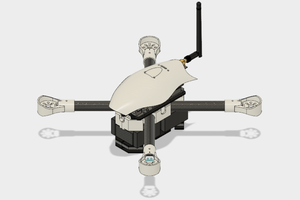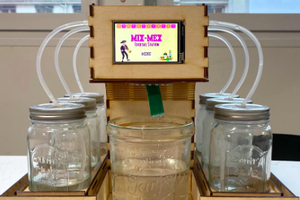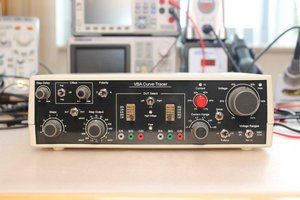Week 1: Project Planning (October 15)
In the first week, the primary focus was on defining the project's scope and setting its foundation. The team outlined the key functionalities, such as incorporating the A and B buttons and a directional pad, while also choosing Arduino as the primary platform for managing inputs. Initial sketches were made, and we emphasized simplicity to ensure the project could be executed within our timeline. Potential challenges, such as the mechanical alignment of the directional pad and the reliability of button signals, were already anticipated.
Week 2: Design and Paper Prototyping (October 22)
In the second week, we transitioned into the design phase, where we worked on sketches and selected the necessary components, such as push buttons and a simple joystick. During this stage, we encountered some significant issues. The spacing of the buttons was too cramped, making the controller less ergonomic, and the joystick was harsh and imprecise, which reduced its usability. To address these problems, we decided to revise the spacing of the buttons and explore ways to improve the joystick's sensitivity. Paper prototypes helped us identify flaws early on and refine our design concept before building the physical model.
Week 3: Testing with Breadboard (November 5)
The third week marked the beginning of the testing phase, where we constructed a functional prototype on a breadboard. We successfully wired and programmed the A and B buttons; however, their signals were inconsistent at times. Additionally, the directional pad presented electrical issues, leading to erratic inputs. Debugging the circuit was more time-consuming than expected due to minor wiring errors and software bugs. This week taught us the importance of precision in both hardware assembly and coding, as even simple tasks required careful fine-tuning.
Week 4 and 5: Prototype Stabilization (November 19 - November 26)
With a basic prototype in place, the focus shifted to stabilizing the signals and optimizing input handling. Significant improvements were achieved by refining the code, which resolved the inconsistent signals from the buttons. We also added LEDs to indicate button presses, which proved to be a helpful debugging tool. These refinements resulted in faster and more reliable button responses. At this stage, we also started planning the design of the controller's casing, which would integrate all the components into a cohesive structure.
Week 6: Casing Design and Challenges (December 3)
During the sixth week, we began working on the controller’s casing, drawing inspiration from the retro look of the Game Boy. To build the casing, we used cardboard and rubber as primary materials. The initial attempts were problematic due to inaccurate dimensions; the first prototype was too small to accommodate all the components. Additionally, finding sufficient cardboard became unexpectedly difficult, which delayed progress. Despite these setbacks, we successfully created a larger and better-fitted casing. Aligning the joystick and buttons remained a challenge, as integrating all the components while maintaining ergonomic precision required multiple adjustments.
Week 7: Final Assembly and Adjustments (December 10)
In the final week, we completed the project by assembling the casing and stabilizing the overall structure. We added stabilizers to prevent the box from shifting when pressure was applied to the buttons. To improve the joystick's usability, we connected it to a pad using a tube made of cardboard. This allowed the joystick to move more efficiently when the pad was pushed forward. However, we encountered an issue where the hole for the joystick's movement was too large, reducing precision. To resolve this, we made the cardboard tube thinner, which improved the connection and overall responsiveness....
Read more » Pokemon ARCADE
Pokemon ARCADE
 Benny
Benny

 Paul Versteeg
Paul Versteeg
 Lexi
Lexi